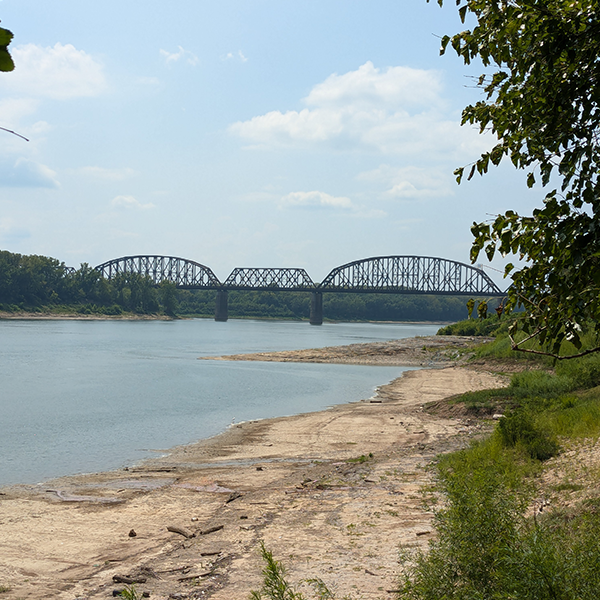A River Spanned Twice
The Ohio River crossing at Henderson, Kentucky, tells a story of ambition that had to be built twice to be believed. The first bridge rose in 1884–85, a bold lattice of steel for the Louisville & Nashville Railroad. At more than 8,000 feet, it was the longest of its kind in the world, a statement that the railroads could bend the frontier to their timetable. For nearly fifty years it carried freight, passengers, and an idea of progress that felt endless—until progress itself wore it out.
By the late 1920s the bridge had grown tired. Freight cars were heavier, locomotives faster, and the lattice that once symbolized strength had become a bottleneck. Engineers faced a dilemma that defines their craft: how to replace the indispensable without interrupting the indispensable. Their answer was simple in concept, heroic in practice—build a new bridge alongside the old, carry the trains across, and then drop the first one into the river.
Work began in May 1931, and by December 1932, the new Henderson Bridge stood ready. When the last rail was spiked, the L&N detonated its predecessor and let it settle into the mud—a rare, deliberate act of industrial succession.
Engineering in Flood Country
The Ohio at Henderson isn’t just wide; it’s unpredictable. The site demanded a bridge that could survive both navigation clearances and floodplain sprawl. Designers stretched the structure to more than 12,000 feet (nearly six kilometers) by pairing long through-truss river spans with viaduct approaches over the Indiana bottomlands. Each truss segment was riveted steel with a Parker-style polygonal top chord—stronger where the bending moments peak, lighter where they don’t.
Construction crews battled silt, current, and summer heat while sinking massive concrete piers by caisson, then assembling the trusses with cranes and floating barges. It was an era before prefabrication or hydraulic torque tools; alignment depended on chalk lines and nerve. Yet the bridge opened on schedule, and nine decades later it still carries the same single track of freight over both water and time.
Technical Profile
- Official name: Henderson Bridge (CSX Railroad Bridge)
- Location: Henderson, KY ↔ Vanderburgh County, IN
- Owner / Operator: CSX Transportation (originally Louisville & Nashville RR)
- Opened: December 31, 1932 | First bridge built: 1884–85 | Old bridge removed: 1933
- Total length: ≈ 12,123 ft (3,695 m) including approaches
- Main river span: ≈ 648 ft (198 m)
- Design: Steel Parker-type through truss with riveted connections
- Purpose: Single-track freight railroad bridge
- Engineering challenges: Long navigation span, deep-silt foundations, wide floodplain; solved with caisson piers, high-clearance trusses, and extended viaducts.
ManMade honors the geometry that holds us up—bridges, buildings, machines—and the people who had the nerve to measure once and build forever.


